Science Objectives
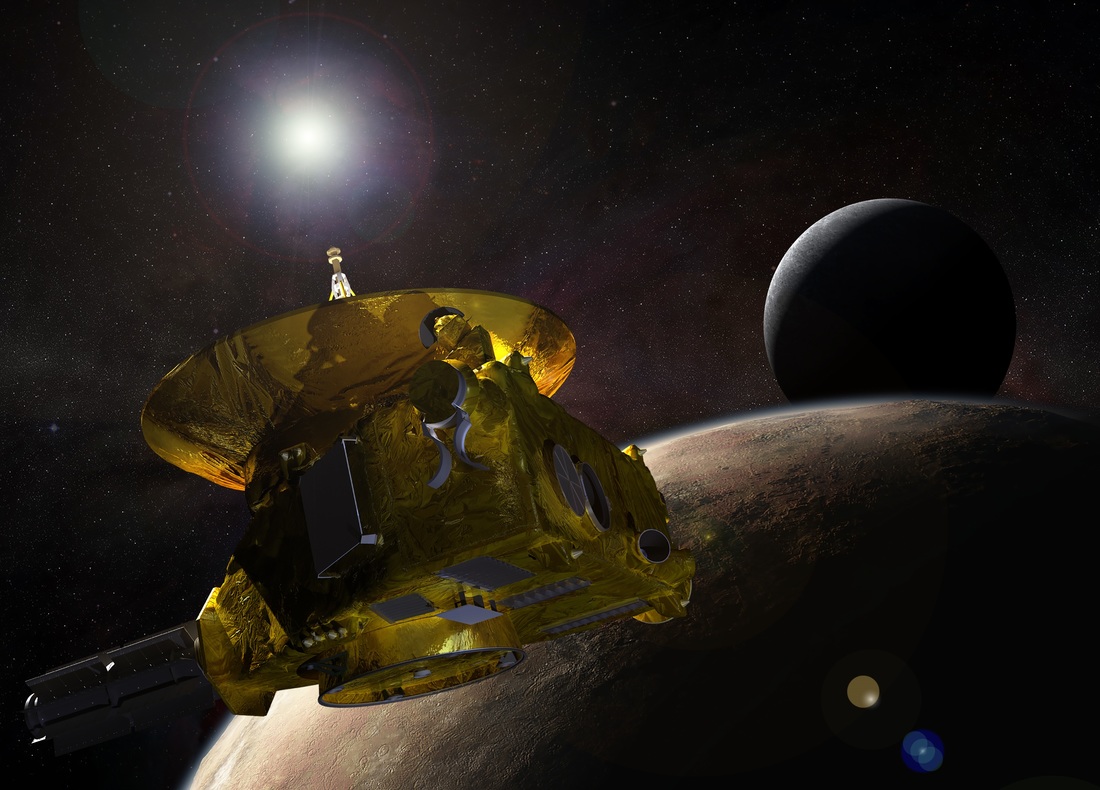
The New Horizons mission started out to study Pluto – the last planet in the solar system that had not been previously explored. The mission launched in January 2006 after a long struggle of mission proposals and studies that began in the 1990s with the intention of launching a spacecraft to explore the distant world during a multi-year window that comes only every 11 to 12 years.
Politics and budget issues led to the cancelation of two previous missions to Pluto before pressure from scientists and the public persuaded policy-makers to fund a mission to the outermost planet in the solar system.
New Horizons was selected in 2001 with the goal of launching to Pluto during the upcoming window opening in 2003 and extending into 2007, with each launch slot requiring a different mission profile to be flown and thus varying the travel time to Pluto to up to 14 years. The spacecraft embarked on its long journey on January 19, 2006 to fly to Pluto via Jupiter for an arrival on July 14, 2015 in an unprecedented study of the last unknown world in the solar system.
The status of the mission changed mere months into the flight from the first exploration flight to the ninth planet in the solar system to the first mission to a Plutoid Dwarf Planet after Pluto’s planetary status was revoked by the International Astronomical Union. This change came after more and more large objects were discovered in the Kuiper Belt starting in the 1990s. With that, Pluto had lost its unique role and was considered just another object in the Kuiper Belt and its status was updated accordingly so that Pluto could take its place among its icy companions in the Kuiper Belt and the other Dwarf Planets in the Solar System.
The scientific discoveries expected from the New Horizons mission will not be lessened by the demotion of Pluto from Planet to Dwarf Planet. Exploring the Kuiper Belt will deliver extremely valuable insights into the early stages of the Solar System its formation and transformation.
Most of the small bodies in the Kuiper Belt are considered to be remnants from the Solar System’s formation – over 100,000 Kuiper Belt Objects 100 Kilometers in size or larger are hypothesized to exist, their orbits extending from the orbit of Neptune out to about 50 Astronomical Units to the Sun.
Reaching the ‘third zone’ of the Solar System, beyond the rocky planets and gas giants, has been a priority for scientists for years because this region holds the building blocks of the solar system, conveniently stored in a deeply frozen environment to preserve the clues needed to understand the early evolution of the Solar System.
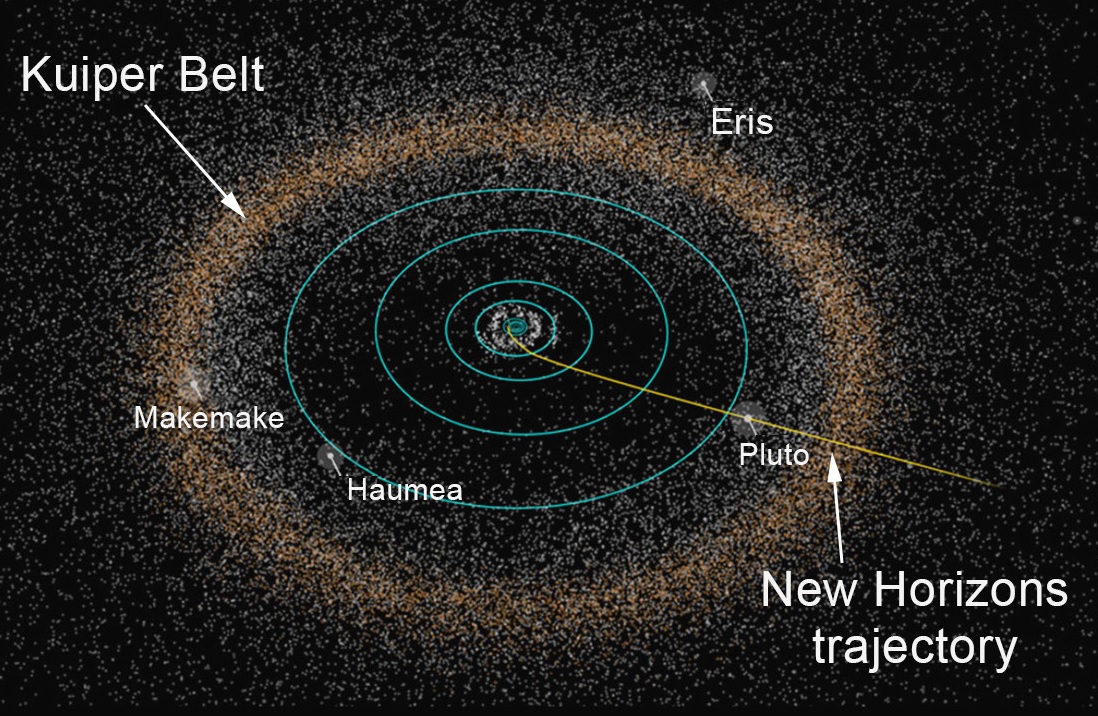
The New Horizons spacecraft is outfitted with a suite of seven instruments to gain a complete picture of Pluto, its atmosphere, its plasma environment, its dust environment and its moons. The mission aims to understand the formation of the Pluto System, the Kuiper Belt and the transformation taking place in the initial stages of the Solar System. The spacecraft will study the atmospheres, surfaces, interiors and environments of Pluto and its moons followed by an extended mission to at least one Kuiper Belt Object.
The science goals and objectives of the New Horizons mission in essence remained unchanged science the early Pluto mission proposals in the 1990s. The scientific objectives of the mission are divided in three categories, Group 1 objectives being required to construct a basic framework of information that answers the core scientific questions on the structure of Pluto and its atmosphere, the formation of the Pluto system and the Kuiper Belt.
The Group 2 objectives add depth to the goals specified in Group 1 and broaden the overall return of information through the addition of highly desirable measurements. The Group 3 of objectives is termed desirable but at a much lower priority than the Group 2 goals. Mission success for New Horizons can be achieved by fulfilling the Group 1 objectives.
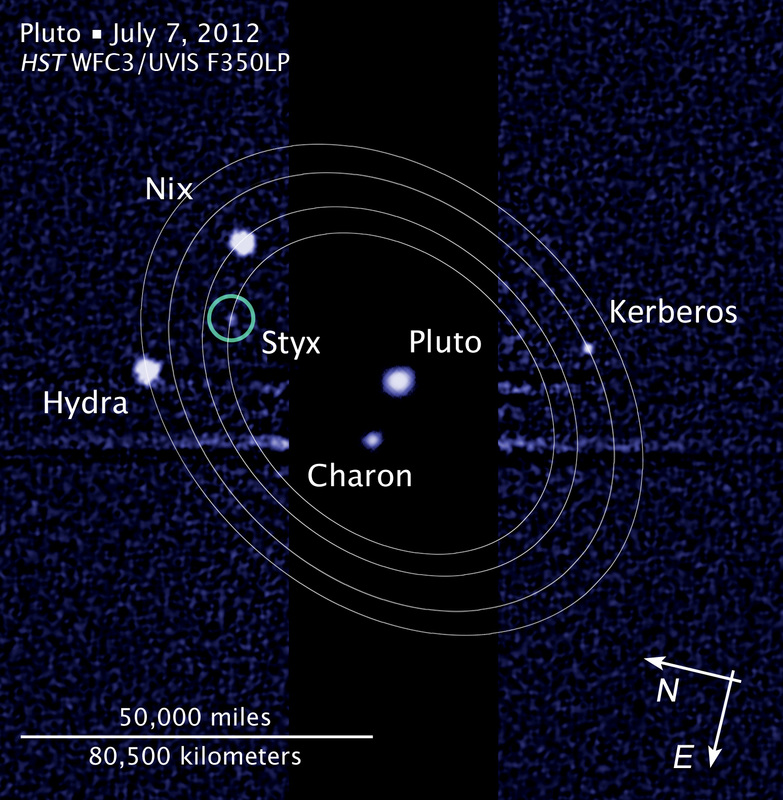
The Group 1 objectives address the most basic questions on Pluto, Charon and the other four moons starting out with the very fundamental question of what do they look like, what are they made of and what is the nature of Pluto’s atmosphere. These questions can be answered through the acquisition of high resolution panchromatic imagery and medium resolution multi-band color images that allow the study of surface features and global geology.
Infrared imaging will map the distribution of nitrogen, carbon monoxide, methane and water on the surface plus other species yet to be discovered. Ultraviolet and radio occultation measurements allow New Horizons to obtain a full atmospheric profile in terms of temperature and pressure plus mixing ratios of major atmospheric constituents.
New Horizons also aims to find out why Pluto and its largest moon Charon look so different. Measurements by the Hubble Space Telescope showed that Pluto is one of the most reflective objects in the Kuiper Belt while Charon has a much lower albedo. Pluto is known to have an atmosphere, Charon likely does not. Scientists hypothesize that Charon was born out of the collision of Pluto with another massive object, not dissimilar to the formation of Earth’s moon – making the Pluto system even more interesting when looking at our own system and its history.
The question is whether the sharp differences between Pluto and Charon are the result of divergent evolution or a consequence of how they originally formed.
Pluto is similar in density, size and surface composition to Neptune’s moon Triton that has been observed by Voyager 2 and – to the surprise of scientists who expected it to be an icy world – showed a great deal of activity in the form of cryovolcanism. Pluto, for a long time, has also been thought of as a frozen world, but may also surprise scientists. New Horizons is equipped to study cryovolcanism, atmospheric activity, hazes, precipitation and other phenomena.
Another measurement that is of importance for any planetary mission is the detection of organics. Organic substances are known to be present on Pluto, but New Horizons is equipped with sharply eyed sensors that can identify and quantify the abundance of organic substances on Pluto and its atmosphere, looking at chemical reactions that may be taking place in the uppermost reaches of the atmosphere where molecules interact with the solar wind.
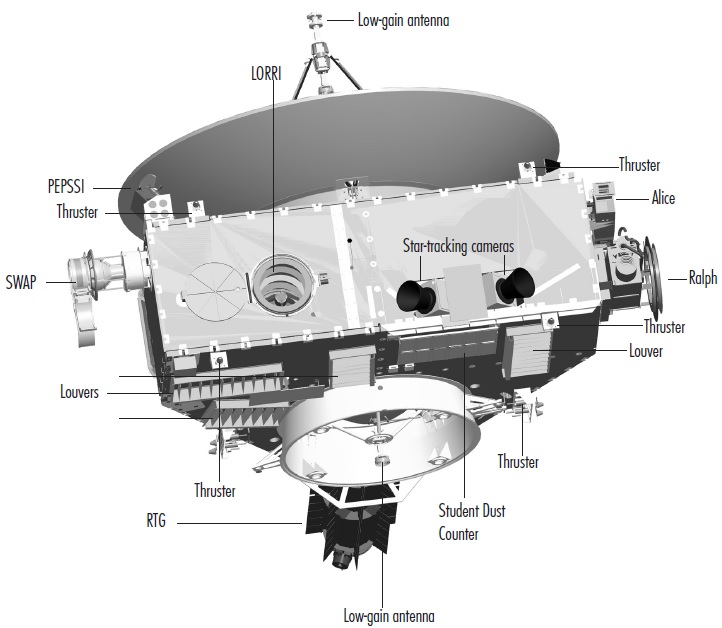
New Horizons is outfitted with two imaging payloads – the high-resolution LORRI telescope observing in the panchromatic band only and Ralph’s MVIC imager acquiring multi-band images in the visible wavelengths. These two imagers will, for the first time, give Pluto a face. Previous observations by the Hubble Space Telescope could only resolve Pluto to about two pixels.
Hubble’s images could be improved through photometric measurements of the planet during a transit of Charon as well as stellar occultations to generate a very crude map of Pluto that is of slightly higher resolution but can not show any distinct surface features. Spectral analysis by Hubble showed that Pluto was red and its largest moon Charon was much darker and Hubble could also be used to discover the four other moons in orbit around Pluto, but their size and shape can not be determined accurately with Hubble.
Approaching Pluto, LORRI delivers high-resolution images of the surface and atmosphere to allow scientists to create a complete map of Pluto and Charon with a resolution of 40km/pixel for Pluto. The smallest surface features will be resolved by LORRI during the time of closest approach when a series of mosaic images are taken with a resolution on the order of 0.39km/pixel.
All these images will be used for a detailed characterization of the geology and morphology of Pluto and Charon that will show their current state and also allow scientists to look into the past and learn about the impact history of the system and visual imagery will also provide information on the current activity of two objects.
The other half of the Ralph instrument, LEISA, has infrared vision, capable of multi-band imaging in the infrared bands to conduct spectral analyses of the atmosphere and surface to determine the composition of the surface of Pluto and Charon. LEISA is responsible for the mapping of water, methane, carbon dioxide, nitrogen ice and other materials on the sunlit face of Pluto and Charon. Infrared imagery can also provide insights into surface temperatures across Pluto and Charon.
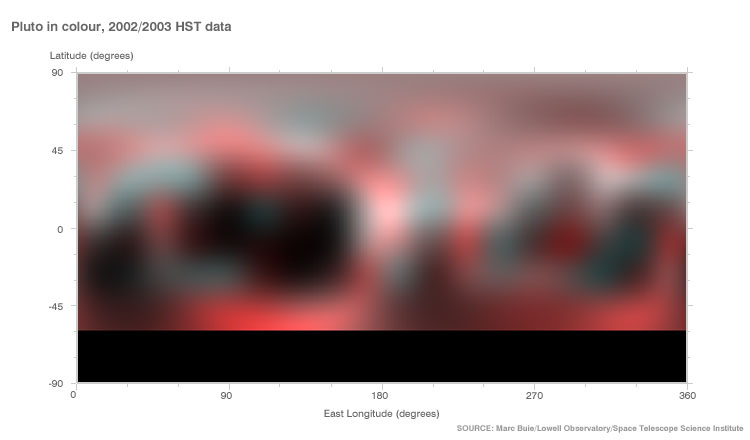
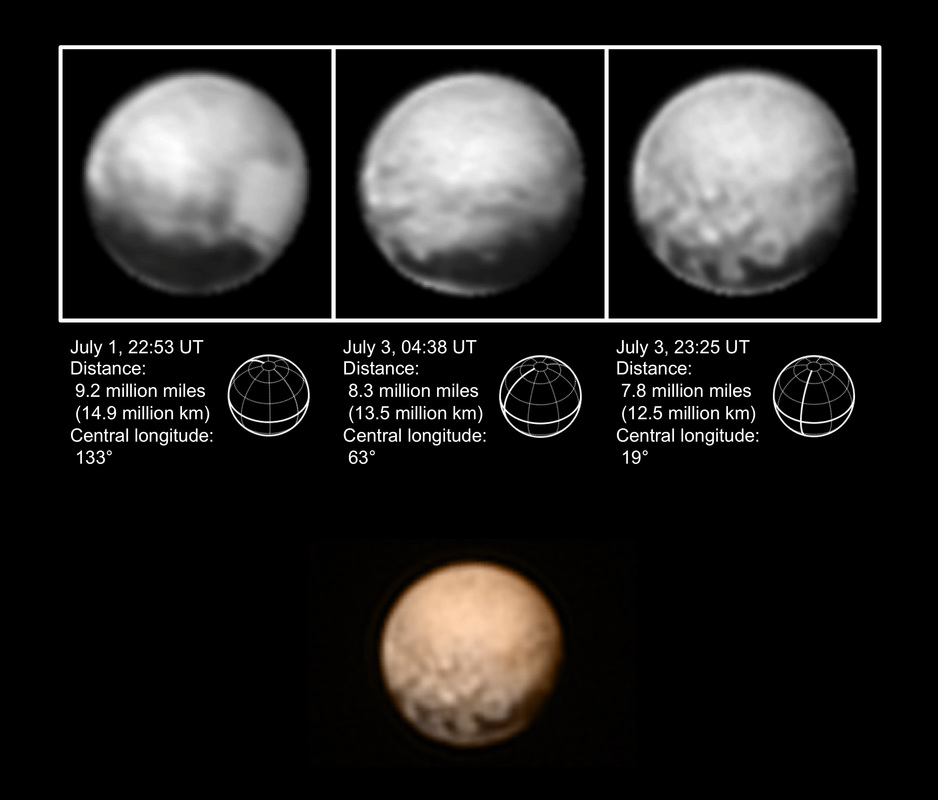
Visible and infrared imagery of previously unknown bodies can deliver a wealth of critical data such as cratering history, surface structures, spatial variability of the surface, volatile transport and many more. Furthermore, Ralph looks at the distribution of the main species on Pluto/Charon, examines the areas of pure ices and mixed areas, studying seasonal transport, searching for complex species, and it assesses the connection between geology and composition. Solar wind interaction and atmospheric loss measurements are also part of the tier 1 objectives.
The Group 2 objectives include a range of questions to be answered by the generation of global maps over a longer period of several rotations of Pluto and Charon to search for temporal variability on the surface that may be the result of activity. Airglow measurements over longer time periods are sought to look for atmospheric variability and stereo views using the multi-band imagers are to be acquired. Spectral imaging is employed to determine the surface temperature of Pluto plus global temperature profile measurements through radio science.
Tertiary mission objectives include the refinement of radii, masses, densities and orbits of Pluto and Charon, and if possible provide better estimates for the properties of the smaller moons. Images of Pluto and Charon may also be used to enable the determination of the Kuiper-Belt Object size distribution through the assessment of surface craters.
The ALICE instrument is an ultraviolet imaging spectrometer that generates images that within each pixel hold the complete spectral information for that pixel in the Extreme and Far-UV wavelength range. ALICE will be particularly active during the solar occultation of Pluto and Charon – when the atmosphere of one of the objects passes between the narrow field of view of the instrument and the sun so that the different atmospheric layers can be examined individually, in particular their absorption in the UV-range of the spectrum which will allow scientists to obtain a full atmospheric profile, identifying the major constituents and the structure of the atmosphere.
The primary task of ALICE is studying the atmosphere of Pluto, determining the abundance of different atomic and molecular constituents of the atmosphere, but also delivering information on the atmospheric structure.
UV Spectroscopy has become a powerful tool for the investigation of physical and chemical properties in the field of astrophysics as the ultraviolet range of the spectrum can be used to extract a wealth of information on atmospheric constituents and all interplanetary spacecraft making a first journey to a planet carried ultraviolet sensors, highlighting ALICE’s role on New Horizons as one of the core instruments.
ALICE aims to measure the mixing ratios of major constituents including nitrogen, carbon monoxide, methane, hydrogen and noble gases, also studying the vertical density and thermal structure of the atmosphere, looking at nitrile and hydrocarbon photochemistry that might be ongoing in the upper stretches of the atmosphere.
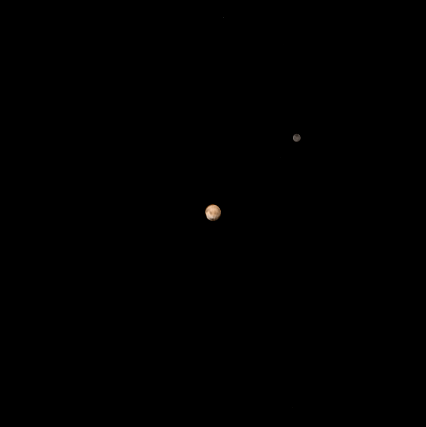
The two particle instruments, SWAP and PEPSSI are active around Pluto to study its interaction with the solar in wind. Though Pluto is very far from the sun, it is not safe from solar wind interaction. In fact, scientists believe that, due to its minute gravity, Pluto is losing a significant amount of material through escape processes driven by the solar wind as atmospheric gas molecules or atoms are stripped away by interactions with the solar wind. The SWAP instrument sets out to quantify the loss encountered by Pluto and also look at the underlying loss mechanisms to compare them with other planets. PEPSSI covers the higher-energy range of the spectrum and can also sense electrons and protons to identify species escaping from the atmosphere which also provides valuable information on the structure of the atmosphere itself. SWAP and PEPSSI are active for a large portion of the cruise of New Horizons through the outer solar system to gather data for heliospheric science.
The Radio Science Experiment will make a twofold measurement. The first is made when New Horizons passes through the Pluto system in the form of precise doppler tracking to determine the exact masses of Pluto and Charon which will deliver clues on the internal structure of the two bodies. On approach, the instrument can also be used for a radiometric temperature measurement on Pluto.
The critical measurements for REX comes after closest approach.
While ALICE makes use of a solar occultation by the atmospheres of Pluto (and possibly Charon), REX will do the same with an occultation of Earth from where a highly stable high-power radio signal will be sent. As the Plutonian atmosphere moves into the signal path from Earth to the spacecraft, the signal will be slightly altered by the atmosphere and REX will record the total power of the signal and a spectrum of the radio signals to be able to study the temperature profile of the atmosphere from over 2000 Kilometers down to the surface, also permitting detailed pressure measurements.
The Student Dust Counter is capable of recording impacts of small dust grains and also determine their mass. It actively records the dust environment from the orbit of Mars out into the distant reaches of the solar system. Dust particles can be released by asteroids, comets, and Kuiper Belt objects, for example as the result of collisions. Obtaining an accurate count and size distribution of dust particles can provide insight into the collision rate of such bodies in the outer solar system. SDC can also search for dust in the Pluto system to look at the impact rate of tiny impactors on Pluto’s moons. The measurement of the spatial and size distribution of interplanetary dust particles is needed to verify the existence of predicted structures within the Zodiacal cloud.
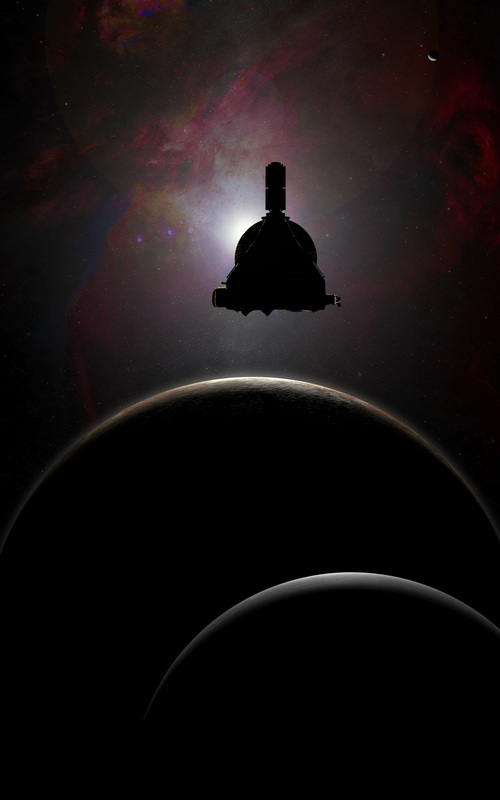
The objectives of the New Horizons mission:
Group 1 Objectives – Required:
- Characterize the global geology and morphology of Pluto and its moons
- Map surface composition of Pluto and Charon
- Characterize the neutral atmosphere of Pluto and its escape rate
Group 2 Objectives – Important:
- Characterize the time variability of Pluto’s surface and atmosphere
- Image Pluto and Charon in stereo
- Map the terminators (day/night boundary) and compositions of selected areas of Pluto and Charon in high resolution
- Characterize Pluto’s ionosphere and solar wind interaction
- Search for atmospheric hydrocarbons and nitriles
- Search for an atmosphere around Charon
- Determine albedos and surface temperatures on Pluto and Charon
Group 3 Objectives – Desired:
- Characterize the energetic particle environment of Pluto and Charon
- Refine bulk parameters (radii, masses, densities) and orbits of Pluto and Charon
- Search for additional satellites, rings and magnetic fields
